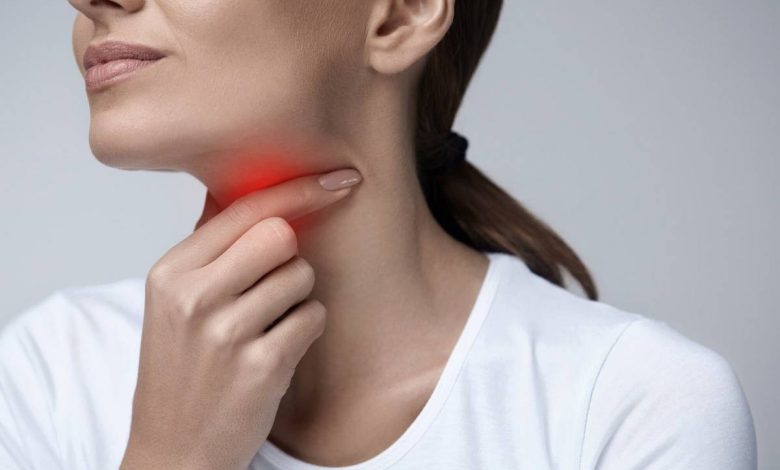Pain when swallowing, dysphagia: what is this, causes, symptoms, diagnostics, treatment, prevention

Painful swallowing; Swallowing – pain or burning; Odynophagia; Burning feeling when swallowing
Painful swallowing, also known as dysphagia, represents a state, in which the act of swallowing causes pain or discomfort. It is a common symptom of many different diseases., such as gastroesophageal reflux disease (GERD), esophagitis or laryngopharyngeal reflux (LFR). Painful swallowing can be caused by various factors., including physical or structural abnormalities, infection or other diseases.
Causes of painful swallowing
The most common cause of painful swallowing is GERD.. GERD occurs, when stomach acid and other digestive fluids back up into the esophagus, causing inflammation and irritation. Other causes of painful swallowing include:
- Esophagitis – inflammation or irritation of the lining of the esophagus.
- laryngopharyngeal reflux (LFR) -the State of, in which stomach acid and other digestive fluids flow back into the throat and vocal cords.
- Structural abnormalities – such as narrowing of the esophagus, hiatal hernia or stricture.
- Infection – for example, Viral, bacterial or fungal infection.
- Trauma - for example, burn or cut.
- Allergy - for example, food allergy or environmental allergy.
- Medicines - for example, certain antibiotics or chemotherapy drugs.
- Tumors - benign or malignant.
Symptoms of painful swallowing
The most common symptom of painful swallowing is a burning or tingling sensation in the throat when swallowing.. Other symptoms include:
- Feeling of food or liquid getting stuck in the throat or chest.
- Pain or discomfort in the throat or chest when swallowing
- Difficulty weight management
- Painful or difficult swallowing as a liquid, as well as solid food
- Coughing or choking while eating or drinking
- Feeling, that something is stuck in the throat
- Hoarseness or sore throat
- Bad breath
- Weight loss
When to contact a healthcare professional
If you experience any symptoms of painful swallowing, you should see a doctor. It is important to seek medical attention, if symptoms do not improve or worsen. It is also important to seek medical attention, if you experience any of the following:
- Difficulty breathing or speaking
- Vomiting
- Heat
- Unexplained weight loss
- Chest pain
Questions, that your doctor may ask
Your doctor, probably, ask you a series of questions, to diagnose the cause of your painful swallowing. These may include:
- When did you first notice the symptoms?
- How often do you experience symptoms?
- Do symptoms get worse after eating or drinking?
- Do you have any other medical conditions?
- Are you taking any medication?
- Are you allergic to any food or medication?
- Have you had any recent injuries or infections?
Diagnosis of painful swallowing
To diagnose the cause of painful swallowing, the doctor may conduct a physical examination, including throat examination.
The following tests can be carried out:
- Endoscopy with biopsy
- Barium Swallowing and Upper Gastrointestinal Series
- Chest X-ray
- pH monitoring of the esophagus (measurement of esophageal acidity)
- Esophageal manometry (pressure measurement in the esophagus)
- Esophagogastroduodenoscopy (ESOPHAGOGASTRODUODENOSCOPY)
- HIV testing
- X-rays of the neck
- Culture throat
Treatment for painful swallowing
Treatment for painful swallowing will depend on the underlying cause.. Treatment may include medication, such as antibiotics or antacids, or surgery, such as endoscopy or dilation.
Home Treatment for Painful Swallowing
If your painful swallowing is due to GERD, LPR or esophagitis, you can do a few things at home, to relieve symptoms. These include:
- Avoid foods and drinks, which may make your symptoms worse, such as spicy or sour foods.
- Eat small meals and chew your food thoroughly.
- Avoid lying down after eating.
- Limiting or avoiding alcohol and caffeine.
- Smoking cessation.
- Avoid tight clothing around the waist.
- Taking antacids or other medications, prescribed by a physician.
Prevention of painful swallowing
The best way to prevent painful swallowing is to reduce the risk of GERD, LPR and esophagitis. This can be achieved, avoiding food and drink, which may make your symptoms worse, eat small meals and avoid lying down after meals. It is also important to quit smoking and limit or avoid alcohol and caffeine.. Besides, it is important to maintain a healthy weight and avoid tight clothing around the waist.
Used sources and literature
Allen C.T, Nussenbaum B, Merati AL. Acute and chronic laryngopharyngitis. In: Flint PW, Francis HW, Haughey BH, et al, eds. Cummings Otolaryngology: Head and Neck Surgery. 7th ed. Philadelphia, PA: Elsevier; 2021:chap 61.
DeVault KR. Symptoms of esophageal disease. In: Feldman M, Friedman LS, Brandt LJ, eds. Sleisenger and Fordtran’s Gastrointestinal and Liver Disease: Pathophysiology/Diagnosis/Management. 11th ed. Philadelphia, PA: Elsevier; 2021:chap 13.
Pandolfino IS, Kahril PJ. Esophageal neuromuscular function and motility disorders. In: Feldman M, Friedman LS, Brandt LJ, eds. Sleisenger and Fordtran’s Gastrointestinal and Liver Disease: Pathophysiology/Diagnosis/Management. 11th ed. Philadelphia, PA: Elsevier; 2021:chap 44.
Wilcox CM. Gastrointestinal consequences of infection with human immunodeficiency virus. In: Feldman M, Friedman LS, Brandt LJ, eds. Sleisenger and Fordtran’s Gastrointestinal and Liver Disease: Pathophysiology/Diagnosis/Management. 11th ed. Philadelphia, PA: Elsevier; 2021:chap 35.
